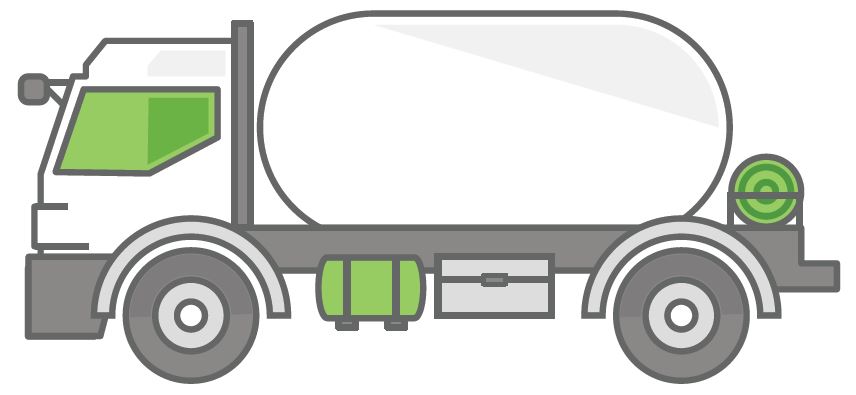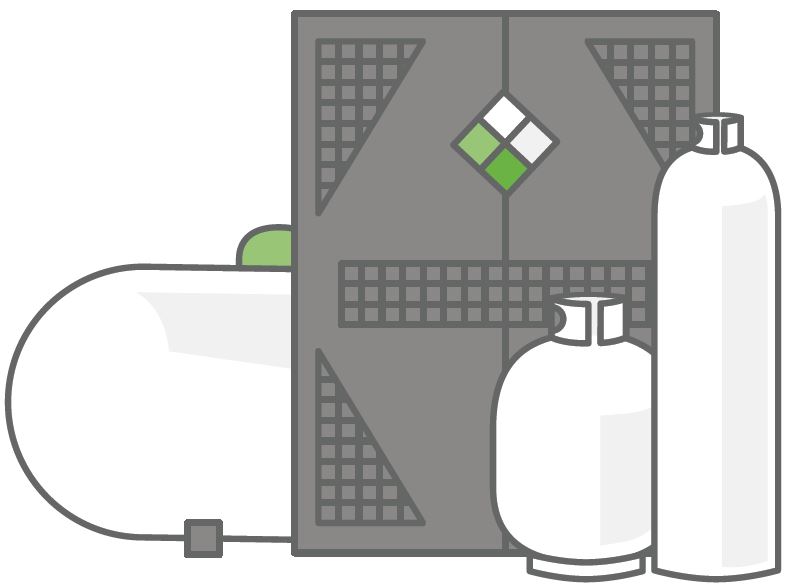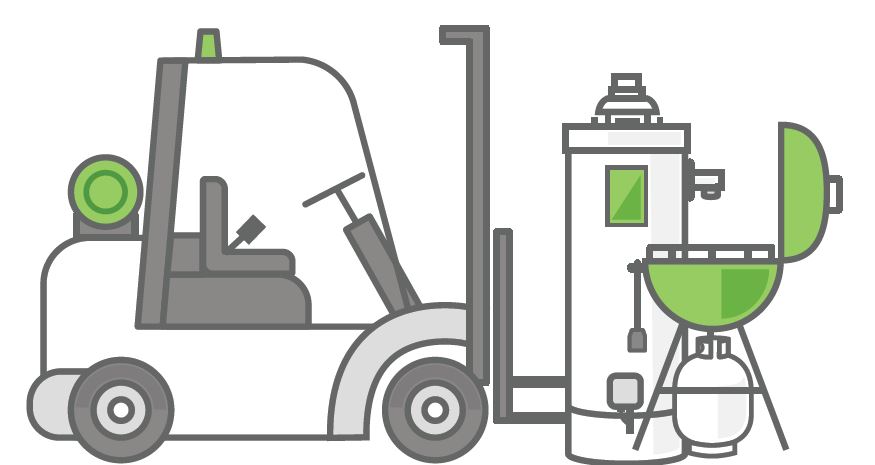Safe from Wellhead to Burner Tip
Whether by pipeline, rail, or over the road, all propane transportation is regulated under the authority of the U.S. Department of Transportation (DOT), through the agency’s federal hazardous materials regulations.
DOT’s regulations for pipeline design, construction and maintenance ensures their integrity is maintained throughout their useful service life. The agency’s regulations for containers such as propane railcars, cargo tank motor vehicles, or DOT cylinders specify that the containers meet specific DOT fabrication requirements, be appropriately marked, and comply with periodic inspection and requalification requirements.

Delivery
Propane is delivered by people who are qualified to transport hazardous materials in accordance with both DOT requirements and the National Fire Protection Association’s (NFPA) LP-Gas Code (NFPA 58), which requires delivery personnel to be trained in safe work practices and the hazards associated with handling propane.
Delivery into stationary customer tanks is monitored continuously until the proper filling level is achieved. Delivery hoses and equipment are inspected during every transfer of product, and emergency shutoff equipment must be regularly tested.

Storage
The storage of propane and the containers in which they are stored are regulated by virtually every fire code used in the United States, all of which reference to NFPA 58.
Propane containers are installed in accordance with the requirements of NFPA 58, which specifies the minimum separation distances from buildings and property lines and provides strict requirements for, among many others, container protection and safe control of the fuel.

Use of Propane
Propane is used in a variety of applications. Numerous model codes, standards and regulations are in place to ensure that the piping, equipment, and appliances used are in compliance with appropriate safety and performance standards and to ensure that these products will perform safely over the life of the appliances and equipment.
Severe Weather
Conscientious builders, remodelers, and propane retailers in areas that are prone to spring and summer tornadoes, hurricanes, and flooding know that preparing customers for extreme weather, and following up with them in the event of a severe storm, is both neighborly and good business. There are precautions that can be taken in advance of storm season, especially for those who live in tornado-prone areas. Retailers and builders should be aware of the following precautions recommended by the propane industry.
- Make sure homeowners know how and where to shut off the outdoor propane supply and indoor appliances.
- Describe propane’s odor-a strong, unpleasant smell not unlike rotten eggs, a skunk’s spray, or a dead animal-so that any leaks are obvious.
- Be wary of any downed power lines located near a tank that has been dislodged from its service line.
- If homeowners find a propane tank on their property that is not theirs, or if their tank has become dislodged or is missing, make sure they know to contact their retailer or the local fire department immediately.
Winters in high snowfall areas can be some of the most magnificent, but they can also be the most challenging. Accumulated snow and ice have the potential to damage customer’s propane systems. Retailers and builders should be aware of the following precautions recommended by the propane industry during a winter storm.
- Mark tanks with a brightly colored stake or flag taller than the maximum anticipated snow depth. Check local ordinances about marking tanks and regulators, and follow any rules applicable to your jurisdiction.
- In high snowfall areas, roads leading to a customer’s home might not be accessible for delivery, particularly after a snowstorm. It is recommended that you establish a regular delivery schedule.
- Make sure driveways and pathways are clear before approaching a tank. Please remember that a propane delivery truck needs at least a 10-foot-wide path to be able to deliver fuel to a customer’s home. Also, keep the tank area and a path to the tank free of snow.
Propane autogas is a safe, proven and reliable fuel. Fleets across the U.S. are fueled by autogas, partly because autogas is intrinsically safer than many other fuels

Autogas Tanks
- Autogas tanks are 20 times as puncture-resistant as gasoline tanks and can can withstand 4 times the pressure.
- The lower pressure required for storage makes autogas safer to maintain than CNG.
- Autogas vehicles tanks are constructed from carbon steel under code developed by the American Society of Mechanical Engineers.
- Properly installed autogas vehicle fuel tanks can actually add to the structural integrity of a vehicle.
Additional Safety Features
- Autogas has a lower flammability range than conventional gasoline, decreasing probability of accidental combustion.
- Each onsite autogas fueling station has a lock-off valve that automatically shuts off the flow of propane autogas at the tank if any pressure drop is detected anywhere throughout the system.
Nontoxic
- Unlike gasoline, diesel, methanol and ethanol, autogas is nontoxic, nonpoisonous and soluble in water.
- Should a rare accidental release of autogas occur, it would dissipate into the atmosphere with no harmful contaminants released into the air, soil or water.

